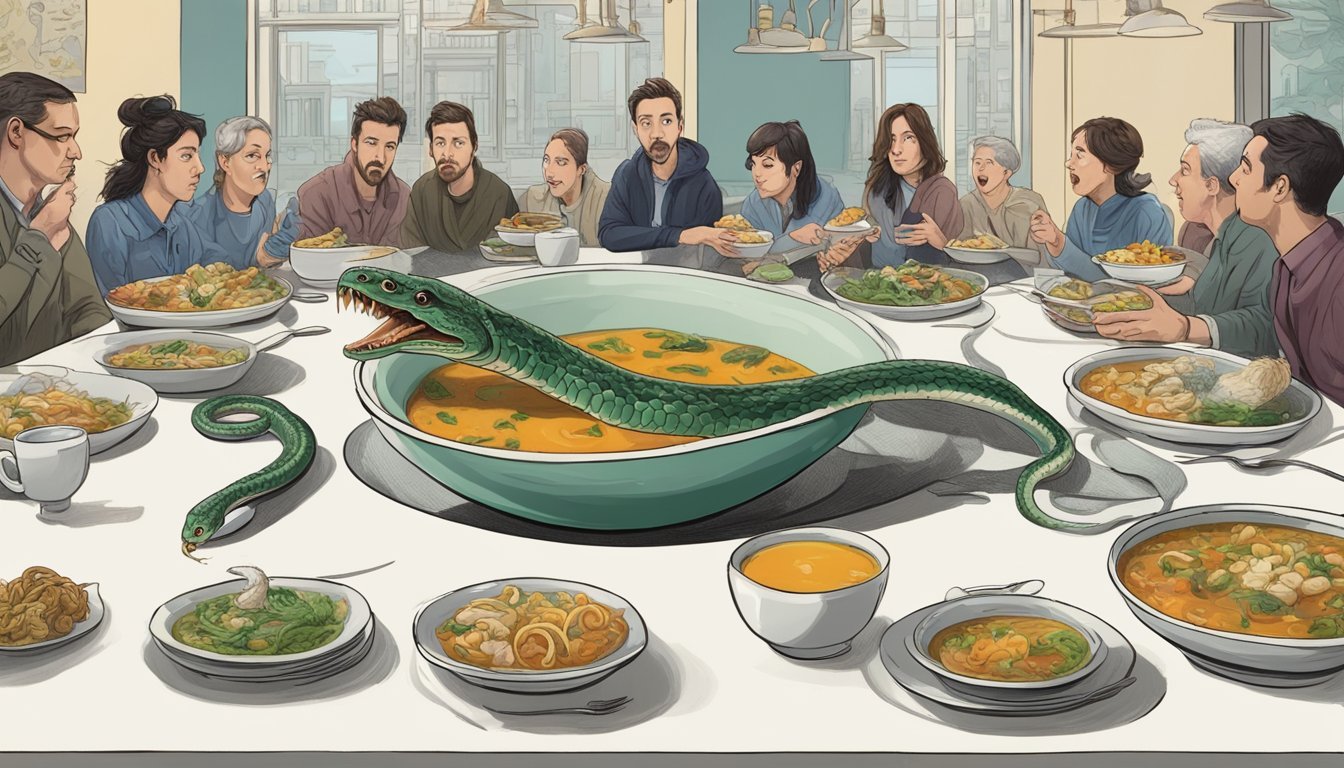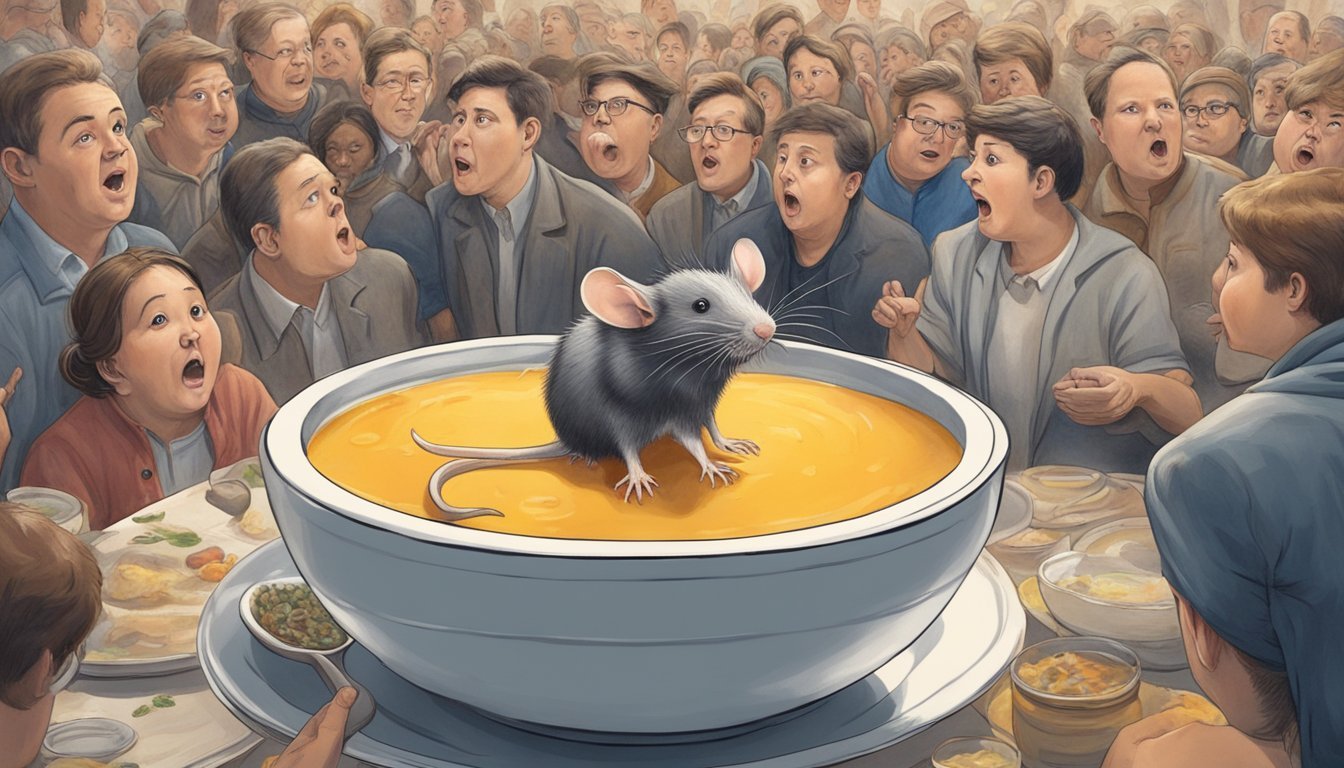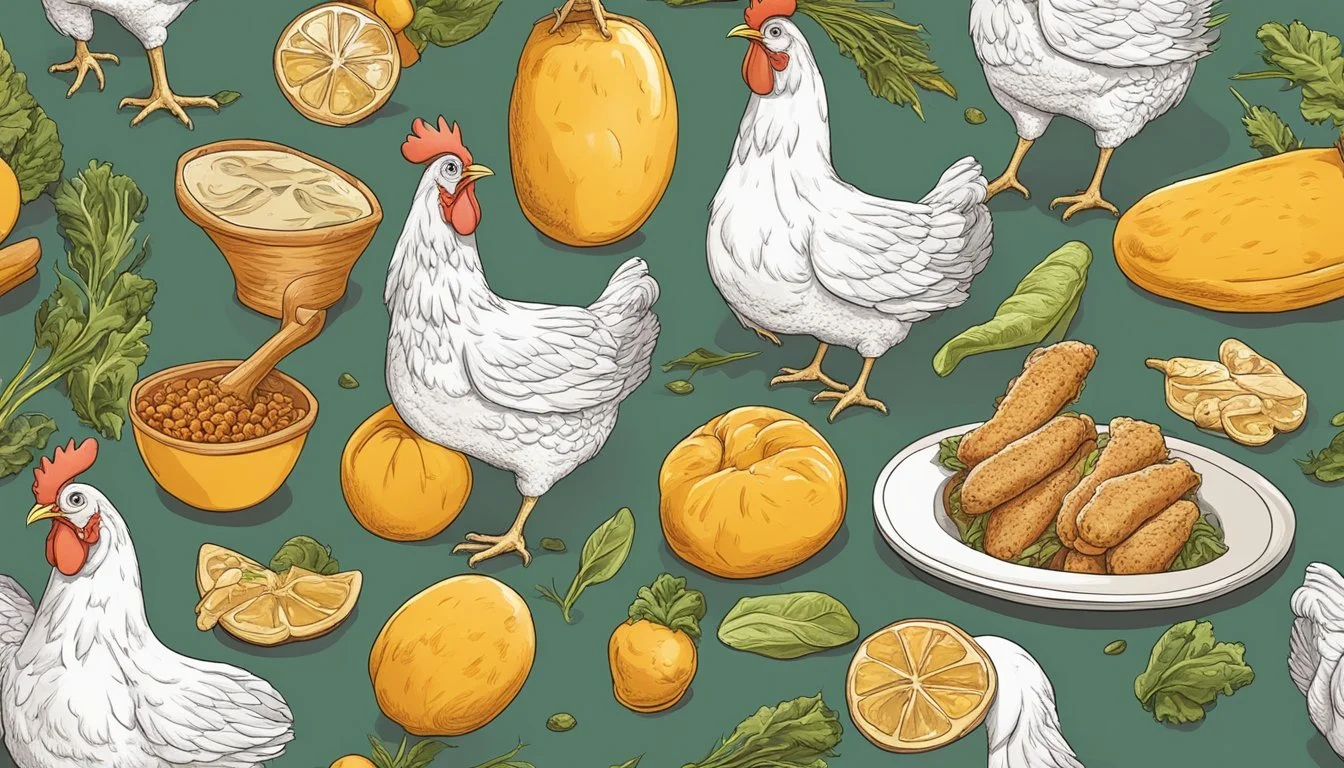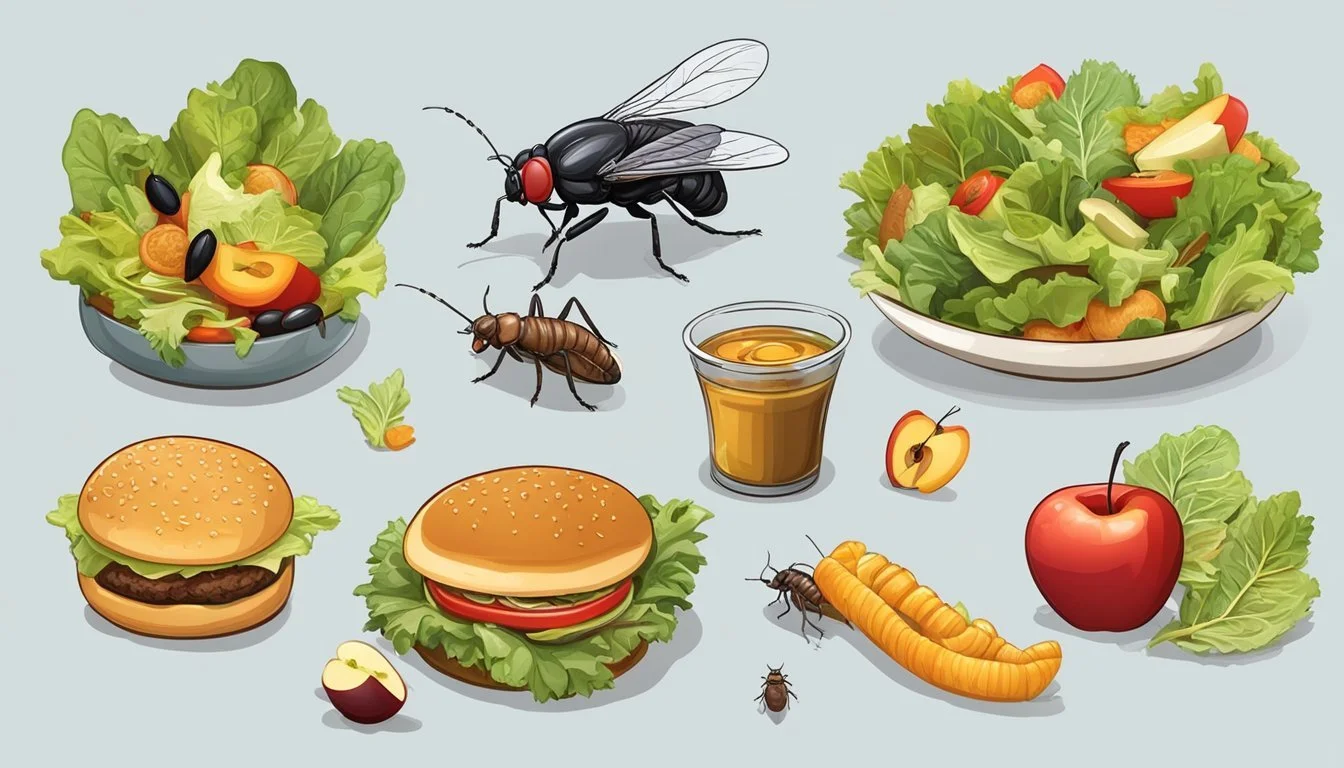10 Weirdest Things People Have Found in Their Food
Shocking Discoveries
Food is an essential part of daily life, but occasionally, people encounter unexpected and bizarre surprises in their meals. These unusual and sometimes unsettling discoveries can range from foreign objects to strange ingredients that one would never expect to find on their plate. Exploring these astonishing incidents provides an intriguing glimpse into the unexpected and often shocking side of food safety and culinary experiences.
The presence of these odd items in food can leave a lasting impression, prompting questions about how such incidents occur and what measures are in place to prevent them. Whether it's a dining out experience or a simple grocery purchase, these stories remind everyone that unexpected surprises can be lurking in the most ordinary of places.
1) A Severed Snake Head
Jack Pendleton experienced an unsettling moment while dining at TGI Fridays. When he looked down at his plate, he noticed something unusual among the vegetables. It was a severed snake head, a discovery that left him and his friends shocked.
TGI Fridays launched an investigation to uncover how this could have happened. The investigation revealed that the snake head had been added to the meal after cooking.
The culprit behind this incident remains unidentified. Despite efforts to trace the contamination, the origins of the snake head in the meal are still unknown.
This incident serves as a stark reminder of the strange and sometimes alarming objects that can turn up in our food. It highlights the importance of strict food safety measures in restaurants.
2) A whole frog
In one bizarre case, a woman in France discovered an entire frog in her pre-packaged salad. She had purchased the salad from a local grocery store and was horrified to find the amphibian nestled among the lettuce leaves.
Instances like this raise serious concerns about food safety and manufacturing processes. Consumers trust that their groceries are thoroughly inspected before reaching store shelves. Discovering such a foreign object can be alarming and unsettling.
The presence of a frog could indicate lapses in quality control. It serves as a reminder for stricter regulations and oversight in food production. This incident was widely reported, prompting the grocery store to investigate and improve its screening procedures.
Such occurrences are rare but not unheard of. They illustrate the unexpected and sometimes shocking nature of what can turn up in our food. The event in France is a vivid example of the peculiar surprises that occasionally make headlines.
3) A human tooth
One of the strangest discoveries in food involves a human tooth. In 2014, a Japanese woman bit into a sausage and found a human molar embedded inside.
This incident attracted significant media attention and raised questions about food safety standards. The sausage manufacturer conducted an investigation and improved their quality control processes.
Such a find is unusual and disturbing, showcasing the importance of stringent oversight in food production. Cases like this serve as a reminder for consumers to remain vigilant.
Instances of foreign objects in food, like this human tooth, highlight the need for manufacturers to uphold high standards of cleanliness and inspection.
4) A live rat
One of the weirdest discoveries in food was a live rat. This incident left people in shock and disbelief. Imagine coming across a rodent crawling in your meal.
In 2011, a customer at a KFC in China reported finding a live rat in their order. The customer was horrified and alerted the staff immediately.
Reports of live rats in food aren't common, but they highlight issues in cleanliness and food safety. Ensuring strict measures is crucial to prevent such incidents.
These rare and bizarre occurrences can have a significant impact on consumer trust. They also serve as reminders for restaurants to uphold hygiene standards.
5) A bullet
In 2011, a Florida woman found a bullet in her Taco Bell meal.
She reportedly bit into her taco and discovered the metal object hidden within the ingredients. The incident caused immediate alarm and led to an investigation by the restaurant chain and local authorities.
The origin of the bullet was never conclusively determined, making it a disturbing and baffling discovery.
Such unusual incidents highlight the importance of food safety checks and the need for stringent quality control in food preparation. This case remains one of the most unsettling examples of foreign objects found in fast food.
6) An Entire Chicken Foot
In some cultures, chicken feet are a delicacy and can be found in various dishes. However, discovering an entire chicken foot in an unexpected place can be quite unsettling. A woman once found a whole chicken foot in her fast food meal, sparking shock and disbelief.
Chicken feet are typically enjoyed in soups, stews, or fried. Nonetheless, their presence in an unanticipated food item raises questions about food processing and quality control practices. Instances like this create concern among consumers about what might end up in their meals.
Finding an entire chicken foot in one's food highlights the importance of maintaining high standards in food preparation and ensuring that such unusual items remain where they belong—in specialty dishes, not in everyday meals.
7) A human finger
In one of the most unsettling discoveries, severed human fingers have been found in food on more than one occasion.
For instance, Clarence Stowers of Wilmington, North Carolina, found a finger in his frozen custard. While enjoying his dessert, he encountered something hard that turned out to be a severed finger.
Another infamous incident occurred at Wendy's in 2005. A woman claimed she bit into a human finger while eating chili at the fast-food restaurant. This case received significant media attention and prompted investigations.
Such shocking discoveries can lead to legal actions and safety reviews. These incidents often result in public outcry and demand for stricter food safety regulations.
Encounters like these highlight the importance of maintaining rigorous hygiene standards in food preparation and handling. Their infrequency doesn't diminish the impact on those involved or the broader implications for food safety.
8) A bandage
A bandage in food is an alarming discovery that often leads to concerns about hygiene and safety in food establishments.
One such incident occurred in Canada, where a family reportedly found a used bandage in their McDonald's fries. They were horrified and immediately left the restaurant, raising questions about food handling practices.
Another case involved a bandage found in a restaurant salad. The customer noticed the bandage after taking several bites, feeling both disgusted and worried about potential health risks.
These incidents highlight the importance of proper training and strict adherence to health and safety standards in food preparation and service environments.
9) A syringe needle
A syringe needle is among the alarming items discovered in food. One instance involved an American soldier stationed in Hawaii. He bit into a Burger King Triple Stacker sandwich and was injured by a hidden needle.
The needle caused serious harm, making his tongue bleed. Further examination revealed a second needle in his small intestine. This incident led to significant medical attention for the soldier.
Such occurrences are rare but highlight serious food safety concerns. Finding a syringe needle in food can pose health risks, including infections, and requires immediate medical intervention. Food establishments must ensure stringent quality control to prevent such incidents.
10) A dead lizard
In 2013, a woman in Virginia discovered a dead lizard in a can of green beans. She had been preparing dinner when she noticed the unexpected guest. The discovery was both shocking and unsettling.
The family contacted the manufacturer immediately. The company launched an investigation to determine how the lizard ended up in the can. Incidents like this are rare but raise concerns about food safety and quality control.
Another notable case involved a woman in New South Wales, Australia. She found a dead lizard in her bag of frozen vegetables. The product was recalled, and this incident also prompted discussions on the importance of stringent checks in food processing plants.
These cases illustrate the unexpected surprises sometimes lurking in our food. It's a stark reminder of the importance of proper handling and thorough inspections in the food industry.
Health Implications of Unexpected Food Contaminants
Contaminants in food can pose significant health risks, from immediate illnesses to long-term health problems. Understanding these risks and taking steps to prevent contamination is crucial for maintaining public health.
Short-Term Health Risks
Short-term health risks from food contaminants can manifest quickly after ingestion. Symptoms often include nausea, vomiting, and diarrhea.
Chemical contaminants, such as pesticides or heavy metals, can cause acute poisoning. Exposure to high levels of mercury, for example, can result in neurological symptoms like tremors and mood disturbances.
Biological contaminants, including bacteria like Salmonella and E. coli, frequently lead to foodborne illnesses. These can cause severe gastrointestinal distress, dehydration, and sometimes require hospitalization.
Maintaining food safety standards in kitchens and food production facilities is essential to mitigate these risks.
Long-Term Health Effects
Long-term effects of consuming contaminated food can be severe. Prolonged exposure to heavy metals like lead and cadmium may lead to chronic conditions such as kidney disease and neurological disorders.
Persistent organic pollutants (POPs) can accumulate in the body over time, potentially causing endocrine disruption and increasing the risk of cancers.
Regular ingestion of foods contaminated with microplastics can pose unknown but potentially serious long-term health risks. Research is ongoing to determine their full impact, but concerns include inflammation and cellular damage.
A diet consistently featuring contaminated food can contribute to chronic health conditions that require extensive medical intervention.
Preventative Measures
Preventing food contamination involves several proactive measures. Regular inspections and strict adherence to food safety protocols in food manufacturing and handling can drastically reduce contamination risks.
Consumers can minimize risks by purchasing food from trusted suppliers and practicing good hygiene in their kitchens, such as washing hands and thoroughly cleaning cooking surfaces.
Education campaigns highlighting the risks and prevention methods can empower people to make informed choices.
Government regulations play a critical role in enforcing standards and conducting regular checks to ensure compliance, helping to maintain a safe food supply chain.
Legal and Consumer Rights in Cases of Food Contamination
Consumers have significant rights when it comes to food contamination. Understanding how to report incidents, seek compensation, and comprehend the consequences for food brands is essential.
Reporting Incidents
When encountering food contamination, consumers should immediately report the incident to relevant health authorities. This includes local health departments and agencies like the FDA. Documentation such as photos, purchase receipts, and medical records can support the claim.
Keeping the contaminated food and its packaging is crucial for evidence. Reporting helps authorities trace the source and prevent further cases.
Compensation and Legal Action
Affected consumers may seek compensation for medical expenses, lost wages, and pain and suffering. Legal avenues include filing complaints with regulatory bodies or hiring a food contamination attorney. Class action lawsuits can be beneficial for widespread issues.
Consumers can contact lawyers specializing in foodborne illnesses for guidance. Legal assistance ensures proper handling and maximizes the chances of fair compensation.
Impact on Food Brands
Food contamination scandals can severely impact the reputation and financial health of brands. Negative media coverage and consumer trust erosion are common outcomes. Companies may face heavy fines and stricter regulations.
Brands often implement improved safety measures post-incident to regain trust. Ensuring accountability is essential for maintaining public confidence in food safety standards.












